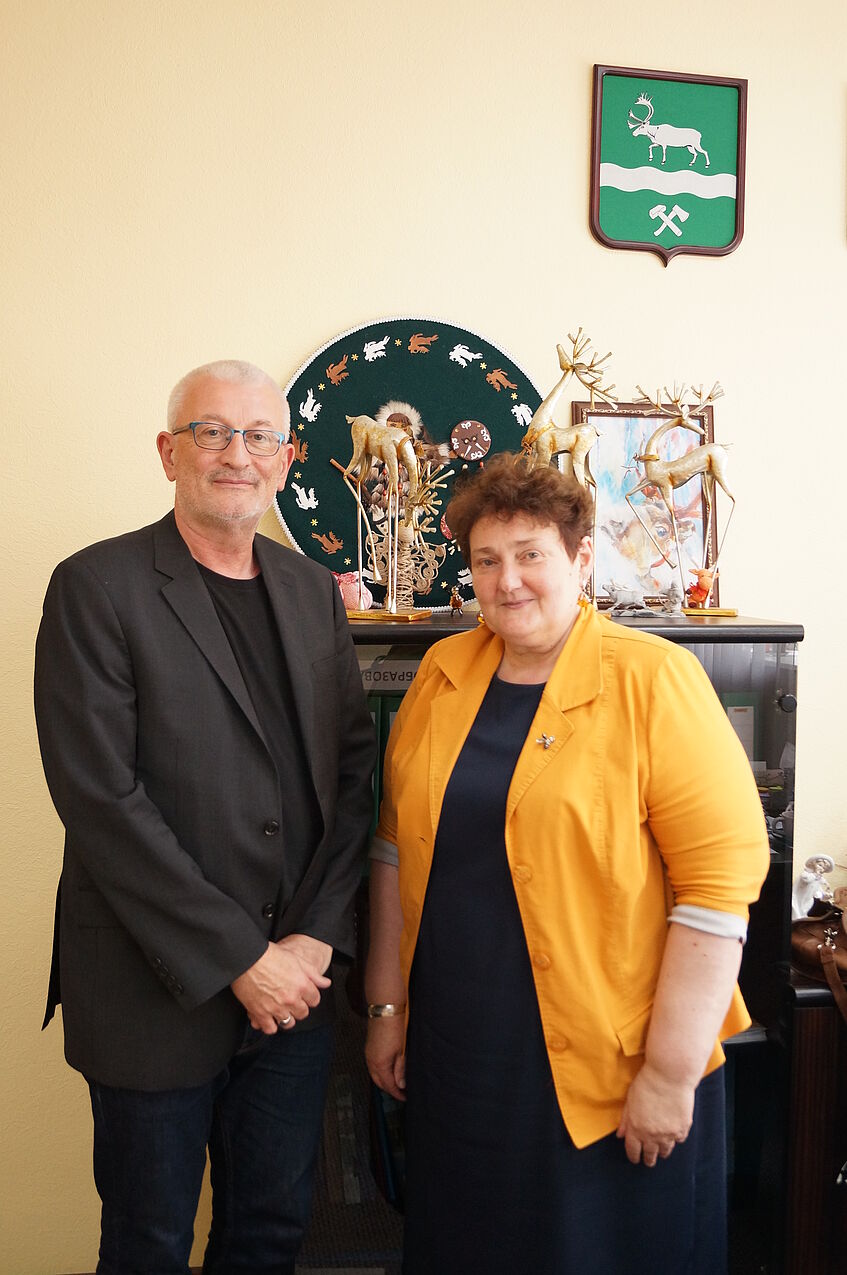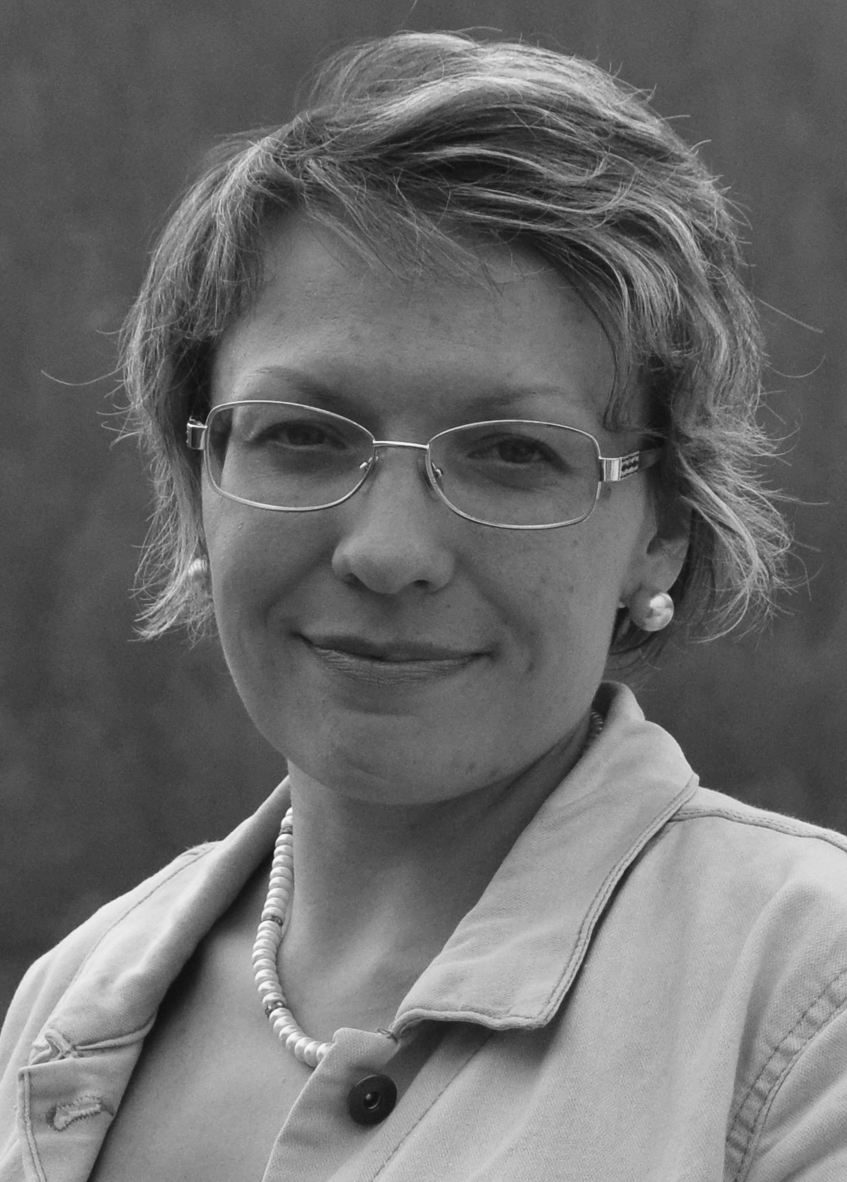Fieldwork, June 29 – August 10 2016
The main aim of this component's fieldwork in summer 2016 was to study the population dynamics, social agency of infrastructure, identity construction processes and mobilities along the Baikal-Amur Mainline. The field sites included the BAM cities of Tynda, Novaia Chara and Severobaikalsk, several indigenous and mixed villages with pre-BAM population (Pervomaiskoe, Chara, Nizhneangarsk, Kholodnoe) in Tyndiskii Raion, Amurskaia Province, Kalarskii Raion, Zabaikalskii Region, Severobaikalskii Raion, the Republic of Buriatiia in East Siberia. Library, archival work and dissemination activities were also conducted in the cities of Moscow, Chita and Irkutsk.

Meeting at the BAM-Museum in Tynda, 07.19.2016 (c) Olga Povoroznyuk
Fieldwork Questions
- Population movement in the BAM region from a historical perspective, starting from the period of geological prospecting and engineering surveys of the area, up to the present day.
- Social agency and role of the BAM as a social (historical) phenomenon and a transportation infrastructure through the analysis of discourses and mobility patterns and cargo flows.
- Techno-social entanglements of humans with the railroad, including overlapping transportation and social networks connecting BAM cities with indigenous villages and taiga campsites.
- Railroad's impacts on the environment, traditional land use practices, and community development.
- Resource and identity politics and stakeholder relations around planned infrastructure connected to the BAM and extractive industries.
Team
The major part of this fieldwork was conducted by Peter Schweitzer and Olga Povoroznyuk, while project partner Vera Kuklina joined the team in the cities of Tynda and Severobaikalsk.
Fieldwork and dissemination activities

Interviewing Kyrgyz migrants at local market Severobaikalsk, 07.25.2016 (c) Peter Schweitzer
This year's fieldwork included individual in-depth and focus group interviews with indigenous and local residents, former BAM builders, officials, workers of the Russian Railroads Company; mobility survey questionnaires focusing on travel patterns and satisfaction with the existing infrastructure; collection of archival and statistical demographic data, and project presentations at the Institute of Geography, Russian Academy of Sciences and a series of round tables in local and regional cultural and administrative institutions. In the course of the fieldwork, 57 interviews with 74 informants representing different groups and stakeholders (indigenous peoples, BAM builders, RZhD workers, officials) were conducted; 132 mobility questionnaires and 10 "emic maps" of the region were collected among local residents and travelers on the train; demography statistics for the three studied districts for the period between 1959 and 2015 was obtained; over 1200 photos were made.
Preliminary Results

Meeting with the head of the local administration in Tynda, 07.17.2016 (c) Olga Povoroznyuk
Our preliminary data analysis and observations show that the BAM construction resulted in a massive population inflow to the region in the 1970s and 1980s, followed by a sharp decline in the 1990s due to the end of the construction and the socio-economic crisis, and currently, by the continuous population loss. Social agency and historical role of the railroad expressed in a demographic change, emergence of a distinct "BAM builder" identity, and emotionally charged memories of the construction period contrast the actual role of the BAM as a means of transportation. Russia's socio-economic situation and resource policies predetermine local communities' dependence on the railroad and extractive industries. This results in the increasing use of the BAM for transportation of cargo (and partially, food supply) vis-a-vis declining passenger connection. The current transportation modernization program (that is, the construction of a second track) is tied to further resource extraction plans leading to immediate profits to the federal budget and private companies, thus causing low expectations, if not pessimism, for infrastructure development among the local population.




